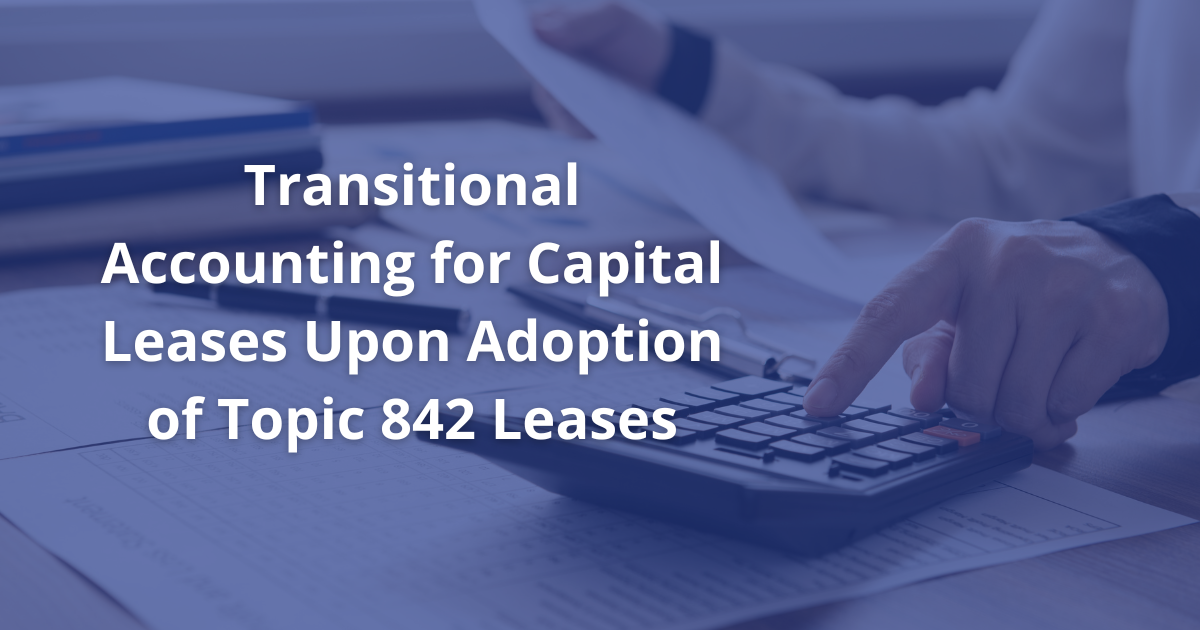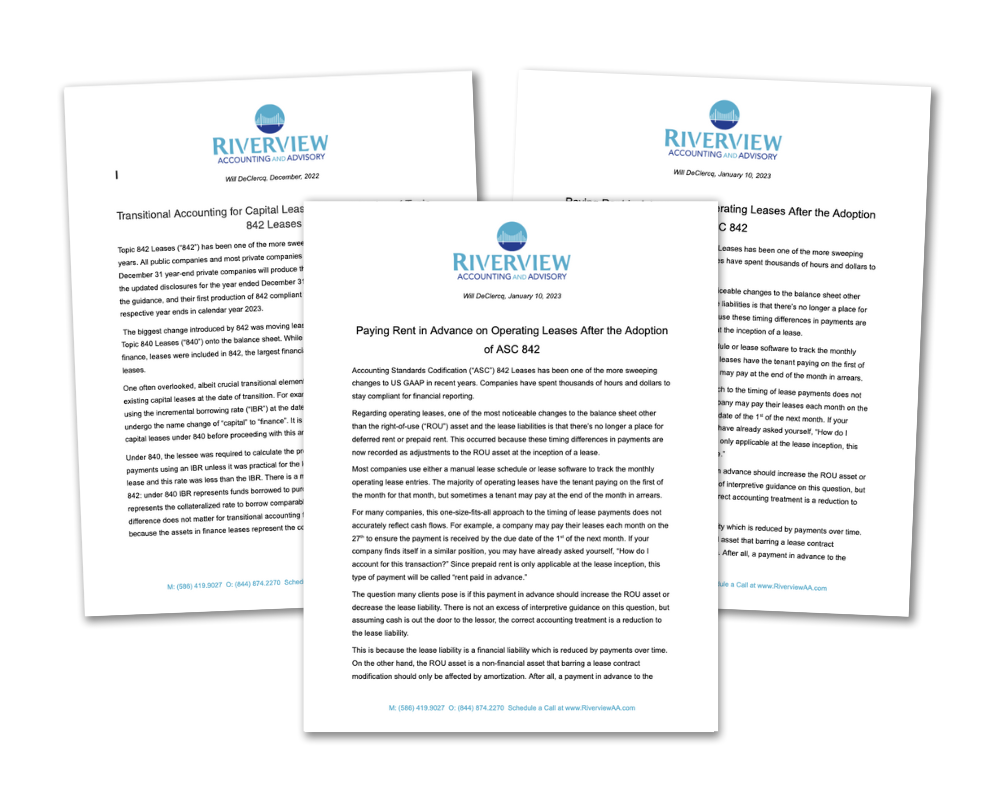Transitional Accounting for Capital Leases Upon Adoption of Topic 842 Leases

Topic 842 Leases (“842”) has been one of the more sweeping changes to US GAAP in recent years. All public companies and most private companies have already adopted the guidance. December 31 year-end private companies will produce their first set of financial statements with the updated disclosures for the year ended December 31, 2022. Off-year end companies have the guidance, and their first production of 842 compliant financial statements will be for their respective year ends in calendar year 2023.
The biggest change introduced by 842 was moving leases classified as operating leases under Topic 840 Leases (“840”) onto the balance sheet. While other changes related to capital, now finance, leases were included in 842, the largest financial impact to lessees was to operating leases.
One often overlooked, albeit crucial transitional elements of the adoption of 842 is what to do with existing capital leases at the date of transition. For example, should these leases be revalued using the incremental borrowing rate (“IBR”) at the date of adoption? Or, should they simply undergo the name change of “capital” to “finance”. It is necessary to understand the treatment of capital leases under 840 before proceeding with this analysis.
Under 840, the lessee was required to calculate the present value of the minimum lease payments using an IBR unless it was practical for the lessee to determine the rate implicit in the lease and this rate was less than the IBR. There is a major difference in the IBR under 840 and 842: under 840 IBR represents funds borrowed to purchase the asset while under 842 IBR represents the collateralized rate to borrow comparable funds as the lease represents. This difference does not matter for transitional accounting for capital leases to finance leases because the assets in finance leases represent the collateral to the purchase.
Capital leases under 840 and finance leases under 842 are capitalized using a consistent approach to determining the future minimum lease payments and the resulting asset and obligation.
No change therefore appears to be necessary to capital leases which become finance leases at the date of adoption of 842. This transition method is accurate and the guidance to support the accounting is within ASC 842-10-65 – Transition and Open Effective Date Information. In this section, under 65-1(r)(1-6) one finds the transitional accounting for “leases previously classified as capital leases under Topic 840.” In this section the “application date” is synonymous with the adoption date of the new guidance. 65-1(r)(1) is the clearest indicator that generally no changes occur to the measurement of existing capital leases as the adoption date. It states that a lessee should “Recognize a right-of-use asset and a lease liability at the carrying amount of the lease asset and the capital lease obligation in accordance with Topic 840 at the application date as determined in (c).” Section “c” in this case simply addresses when the lessee adopts 842.
Topic 842 Leases is a complex portion of US GAAP. This small excerpt clarifies only a small portion of the broader guidance. Any implementation of accounting standards should be done through detailed review of the applicable guidance and possible consultation with the lessee’s accounting firm.
Download The Article

